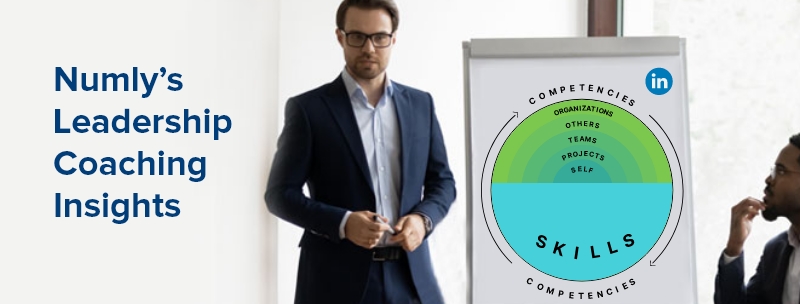As most organizations embrace the future of work and new work dynamics, the focus on driving employee productivity without compromising well-being continues.
Leaders in this new, hybrid and evolving work environment have to discover new strategies to build productivity, performance, and connection within the workplace and promote the right work culture. Top-down command and control leadership styles are waning in their ability to drive performance across teams. These dated leadership styles no longer remain relevant in a workforce that demands greater autonomy, and agency in the workplace.
Leadership needs a mindset shift
As trends like the Great Resignation emerge, the connection between employee well-being and attrition become clearer. However, employee well-being goes beyond spa vouchers or other such cosmetic benefits. It becomes more about creating workplace environments and systems that deliver enablement and support to employees when work happens, wherever it happens. At the same time, leaders need to ensure that well-being does not compromise productivity and performance.
The mindset that command and control or authoritarian leadership will get the job done is now redundant. Coaching is the strategy that leaders need to adopt to balance productivity and well-being for driving organizational outcomes.
So, what can organizational leaders do to ensure that the work gets done while driving employee well-being?
Presenteeism v/s Productivity
Organizational leaders now need to help their teams navigate challenges that they face both inside and outside the workplace. Workloads impact employee well-being as does poor mental health.
Research shows that stressed and burnt-out people do not perform well at work. Presenteeism also impacts productivity.
Harvard Business Review states presenteeism is all about “…people hanging in there when they get sick and trying to figure out ways to carry on despite their symptoms,”. They will stay back late and arrive early to remain more visible.
The emphasis here is on visibility- the focus is on showing up at the cost of output. Deloitte finds that presenteeism costs organizations three times more than sick leaves.
Leaders need to develop greater empathy toward employees and their challenges. Employees must be coached to help them identify barriers to success. Better workload mapping, identifying productivity blockers, and coaching teams to develop greater resilience and a growth mindset become important KRAs for leaders. Doing this also drives the focus on productivity as opposed to presenteeism.
Build accountability and ownership
Productivity is ultimately about accountability and ownership. These traits develop when employees are treated as assets and not as payroll numbers. Building accountability and ownership demand leaders to coach their teams on the same.
Coaching teams on the importance of their work. It is important to help the teams see how their role contributes to the overall organizational development. It also involves assessing workloads and working patterns. Leaders must coach employees to identify their peak productivity hours, help them discover new problem-solving mechanisms, and develop a culture that encourages help-seeking by building team belonging.
Move away from timesheets to time spent on work
Hybrid working is a completely new way of working. It can make employees feel stressed and make them feel like they are ‘always on’. Along with driving the right technology upgrades leveraging automation to reduce cognitive loads, and employee-friendly HR policies, leaders need to focus on the internals and design new ways of listening and accounting for how workplace priorities have changed.
Focusing on time sheets as a measure of productivity is no longer relevant. What is important is to engage with the teams meaningfully, discover options with them, and develop a co-creative relationship where the leader and the employee engage to identify ways to get things done.
Coaching teams and helping them internalize the importance of their work, challenging them with exciting projects, and treating them with empathy, respect, and non-judgment build greater ownership across teams. Getting the job done then does not come at odds with well-being.
Hyper-focus on career pathing
Low productivity is often a result of low motivation. Most people feel demotivated when they do not find their jobs exciting, or their roles are no longer appealing. Lacking career pathing strategies, poor communication regarding the same, or talking about career pathing only at the end-of-year performance review is unlikely to drive employee engagement and productivity. It is more likely to build stress and frustration that impact employee well-being.
Career pathing and performance management initiatives have to become continuous. Annual goal-setting and reviews are no longer realistic as the world of work evolves. Feedback and career development have to become more holistic and account for more than developing technical competencies.
For leaders, it is essential to coach employees to focus on building their careers, identify their goals, help them assess their existing capabilities and their skill gaps, and then help them navigate this path.
The annual performance review is now a mere relic of the industrial age. Modern performance management is all about creating the right ecosystems that build a greater connection with relevant, contextual, proactive feedback.
Leaders must coach teams to develop the objectivity to measure behaviors and actions that promote growth. This action needs continuous self-reflection. Coaching employees to determine personal goals, the potential for growth, and pathways to achieve this helps them develop and enhance their balance, empowerment, and sense of purpose. These actions ultimately motivate performance.
To sum up – Leaders need to focus on human sustainability
Sustainability has come to the forefront as an organizational goal for most organizations. One of the key pillars of sustainability is human sustainability. Driving human sustainability across the organizations to make wellness an organic part of the organizational DNA is now a key leadership responsibility.
Examining workloads, employee demands, and desires, improving career pathing initiatives, focusing on DIEB initiatives, and leading with empathy and non-judgment are now critical.
Leading effectively in this new, hybrid workplace, demands leaders to learn the art and science of coaching. Coaching leaders can alleviate stress and burnout – the two elements that damage creativity, productivity, innovation, and overall well-being. Proper resource allocation, workload management, contextual and relevant training plans, and empathetic problem-solving drive enablement at work. This, in turn, enhances productivity as the employee has all the tools to sit in the driver’s seat and navigate their professional journeys.
Do you want to build your team of coaching leaders? Connect with us to evaluate how our unique coaching and networking platform can help.

